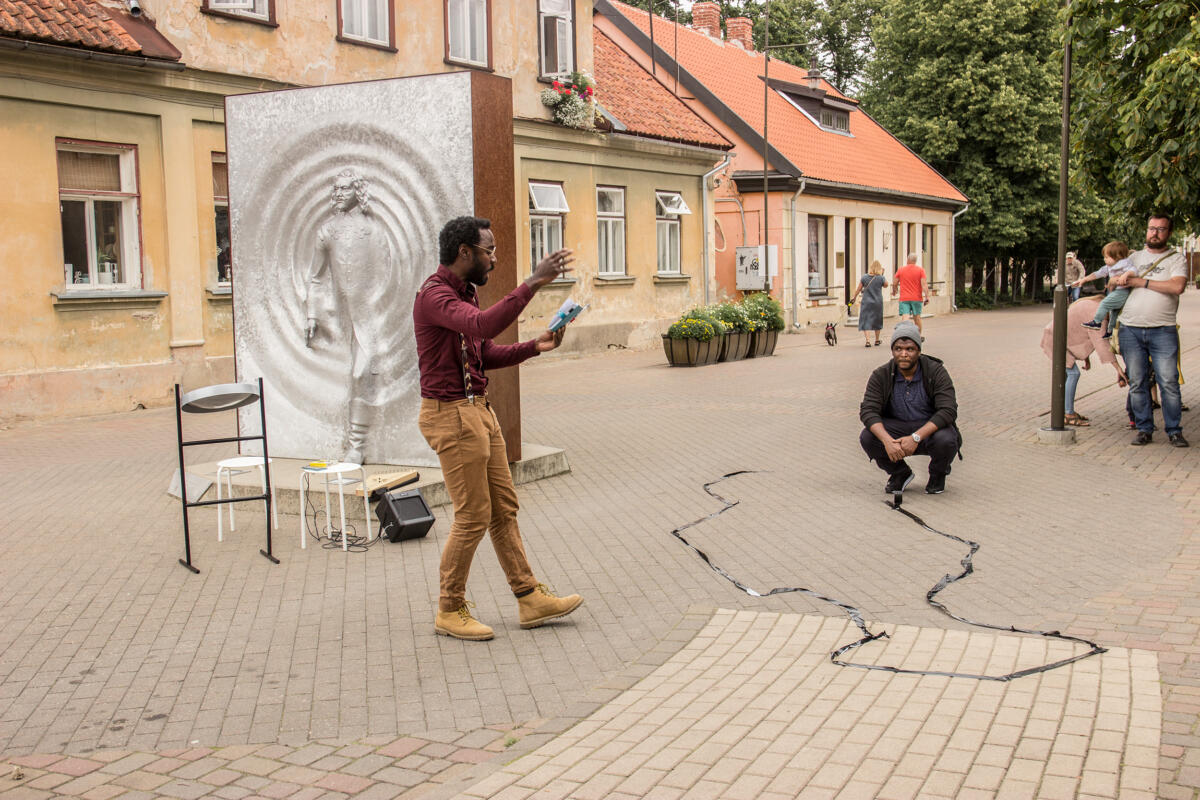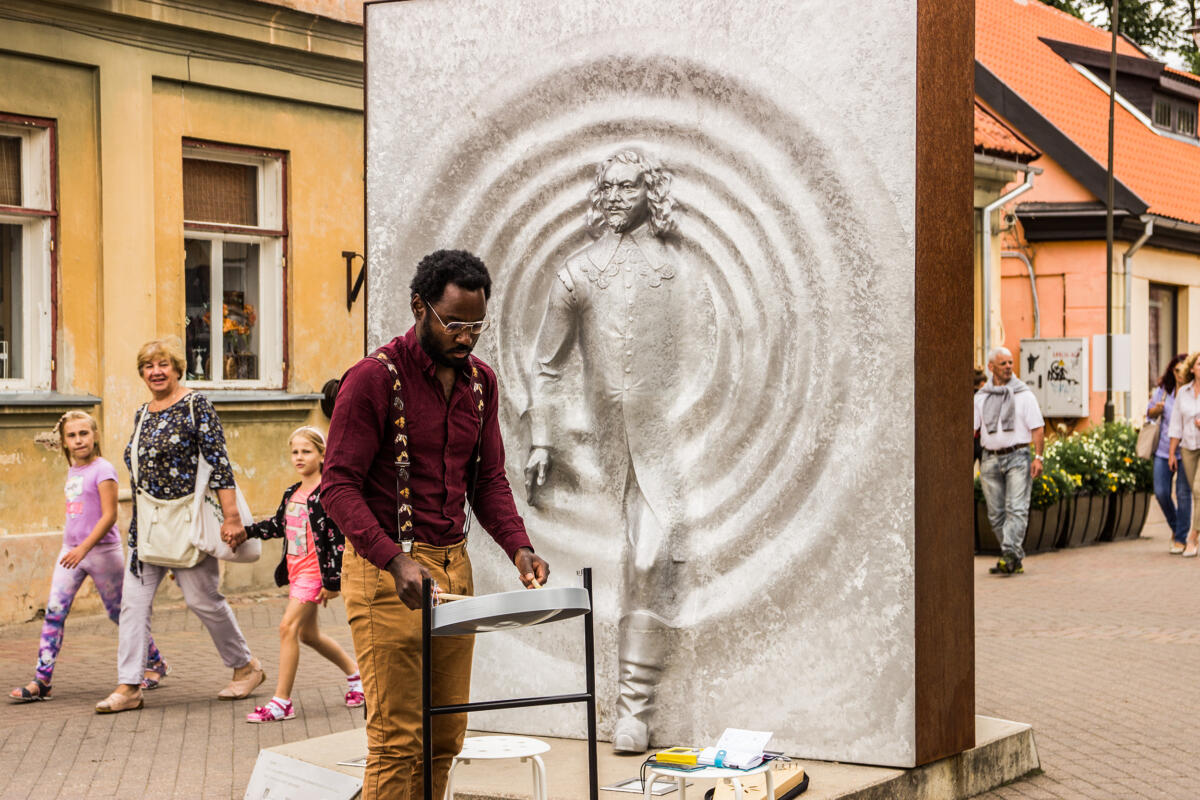
While many monuments to colonial conquerors have become subject to increasing condemnation, or taken down because of heightened public emotion and demands for social and historical justice, or relocated from their original places, in the Baltic States, public discussion about its colonial past is at its beginning. The 17th and 18th century’s colonial past, shared with Western Europe through Baltic German landlords, is approached here rather differently. In this context colonial relations are waiting to be opened up, researched, and incorporated into local narratives of history. Or as the Dutch artist of Caribbean origin, Quinsy Gario, has recently suggested – to be repaired. Here the approach to this past is symbolically embodied in the fact that in Latvia, a monument to the Baltic-German duke Jacob Kettler, who traded enslaved people and owned overseas colonies in Tobago and Gambia for a number of years, was set up rather recently – in 2013. This peculiar monument in Kuldīga’s center titled “Teleport” has two sides. It envisions Kettler stepping out of the rusted past on its back side, while he heads to a bright future on the silvered-coloured front side of the monument. The form that this monument takes is in line with popular sentiment about the 17th century ruler and his colonies among the locals. According to this perspective, the colonial past elevates Latvia to the position of a former colonial force alongside its Western European counterparts. Hence, rather than being seen as a regrettable historical fact, this past has become desired, and for some it’s even something to be proud of as Latvia popular culture suggests.
In the Live museum-Ancient Kuldigas story, Kettler appears as a hologram. No mention is given to the story of the people he enslaved and transported to Tobago and other Caribbean islands. Instead, the museum’s narrative is driven by pride for Duke Jacob’s colonies and juxtaposes this particular “golden age” with the plagues that devastated the country. In the National History Museum of Latvia, his colonial conquests are interpreted as a necessity and an economic project needed for overcoming the oppression of the Russian Empire. For anyone dealing with Eastern European history, this problematic contemporary reception raises a range of new questions: how can and should this past be approached and discussed? Given that understanding it will be necessary for changing the currently accepted position, how can one make sense of it when this chapter in Latvian history is often downplayed by local intellectuals? How can the different layers of colonialism at stake in this story be seen and acknowledged in relation to each other? This article will touch upon two recent and pioneering art works that engage with the largely unknown facets of this chapter in Latvian history, to reconsider some of the relations involved in this transnational history as well as their contemporary legacies. First is a performance which was held at the monument to Duke Jacob Kettler in Kuldīga, in the beginning of August, as a part of the International Summer School of the Latvian Centre for Contemporary Art in the framework of the project “Communicating Difficult Pasts”. The second work is an installation titled “ⵉⴼⴽⴰⵢⴰⵙ ⵉ ⵎⴰⵓⵔⵉⵙ ⵉⵇⵇⴰⵢⵏ ⴷⵜⵎⵎⵓⵔⵖⵉ ⴷⵡⴰⵎⴰⵏ (we offered Maurice dates, grasshoppers and water)”, which was displayed at the Stedelijk Museum in Amsterdam as a part of the exhibition In the Presence of Absence. Both of these works have grown out of Quinsy Gario’s collaborative research: first with his brother, musician and poet Jörgen Gario, and then with Dutch-Moroccoan artist Mina Ouaouirst and her family in Morocco. These works draw new and important connections for Baltic and Latvian histories, especially between the Netherlands, Switzerland, Morocco, Egypt, and Tobago and St. Martin in the Caribbean.
***
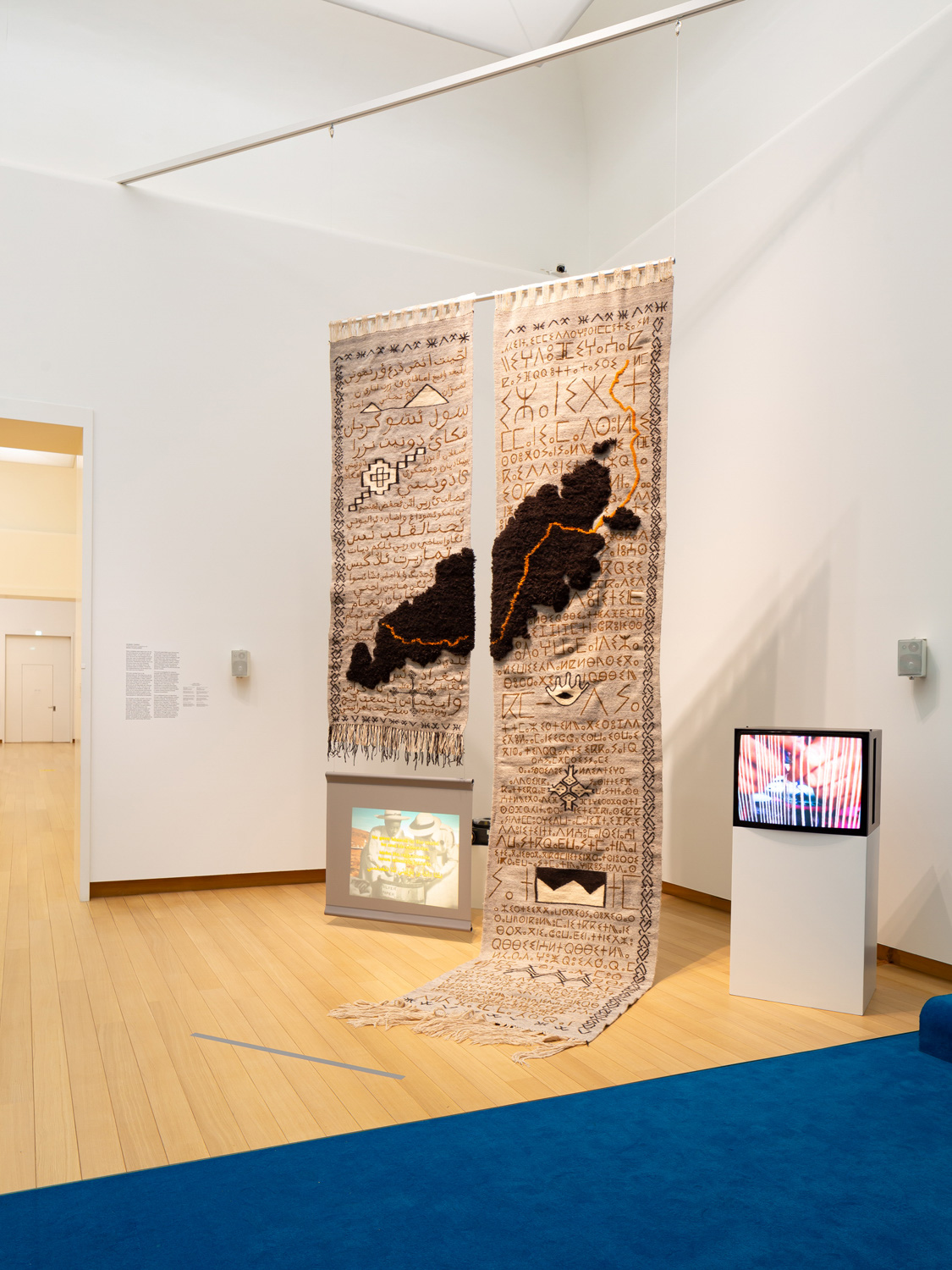

On August 3, 2020, Quinsy and Jörgen Gario held a performance of “How to See the Spots of Der Leopard” which was an intervention into the colonial narrative that the monument to Jacob Kettler publicly manifests. Its title was inspired by the name of Kettler’s ship Der Leopard, which was used to forcibly transport abducted African people who were then enslaved and sold in the Caribbean islands. Their performance was an attempt to disrupt the pride with which most Latvians continue to look at this history by showing relationships between violence and the transatlantic economy, and bringing to the fore this neglected side of the story. It combined spoken word with music of the steelpan, an instrument that originates from the enslaved communities of Tobago, and the kokle, a well-known traditional Latvian folk instrument, to tell the alternative story. The performance was built upon Quinsy’s question to the audience: Are you nostalgic? Accompanied by the rhythms of the two instruments, he built up the atmosphere by continuing to ask: Are you nostalgic for oceans and seas? For adventure? Are you nostalgic for heroes? Are you nostalgic for violence? While posing these questions the artist started to draw an island on the pavement next to the monument. It is difficult if not impossible to describe the work of a spoken word narrative because it operates mostly on the changing level of energy, intonation, and rhyme scheme, as a way of creating an atmosphere, and words alone often fall short in an adequate description. Are you nostalgic of those who aren’t here? Of those who left everything behind, and those who vanquished? Have you heard about Tobago? Tobago was not made, Tobago was claimed, Quinsy continued.
The performance was then joined by Jörgen Gario playing steelpan, with deep sounds that caught the audience’s full attention. His message was struggle and its different dimensions, reminding that it is a place and has a face. He then added the kokle, turning the musical performance with both instruments into a part of this message. While finishing the drawing of Tobago on the pavement, Quinsy Gario continued: Are you nostalgic about those things in which we feel comfortable? For those stories in which some of us were not seen as humans? Are you nostalgic for capital, nostalgic for market? We are not, he finished saying, culminating the performance.
There were about 80 viewers of the performance, including casual passersby, people working at the nearby local market, and the group of International Summer School participants. Many locals remained to see the whole event, some of them approached the artists for short conversations in Kuldīga even days later. People’s reactions were mostly puzzlement, curiosity, and sometimes unknowing for how to react to what they encountered.
The presence of two artists of colour had drawn attention on the dominantly white streets of Kuldīga, where more common cultural differences can be seen in language and identity rather than in skin colour. In the discussion that followed, much attention went into thinking about the ways in which Jörgen’s figure, as a man of colour playing the kokle, could be interpreted. Some of the locals interpreted this in combination with the topic of nostalgia as being a supposedly Latvian legacy left behind in Tobago. Questions were also raised about museums and how to deal with stolen heritage in present-day collections, in his answer to this question Quinsy stressed the need to problematize and open up the often-used concept of source communities, because of the scattered and dispersed nature of the communities concerned. To my knowledge no local articles have been published about this performance, although news about it was shared on many social media accounts.
The second work at the Stedelijk Museum, that while acknowledging the title in Tamazight language I will – for the sake of simplifying – refer to as “We offered Maurice dates, grasshoppers and water”, advances the story of Saint Maurice or Mauritius or Morris, an important figure for Latvia and Estonia. Regardless of his appearance on the coat of arms of some of the most beautiful medieval buildings in Riga and Tallinn, and despite having a town named after him in Switzerland, surprisingly little is known about his life to this day, which was the starting point for the piece. Saint Maurice was born in nowadays Sudan and lived in the 3rd century. He gained the status of a saint for sacrificing himself for his army in Switzerland as a general of the Theban legion in the Roman army. Ordered to lead a rebellion against the Roman Empire, according to the legend, Saint Maurice and his men refused to fight fellow Christians who were civilians. He was the patron of The Brotherhood of Blackheads, and according to what is known, gathered unmarried merchants and operated in Latvia and Estonia from the 14th century until the Second World War.
The work is a collaboration between Quinsy Gario, Mina Ouaouirst, her Moroccoan-based aunt Zahra ait Lehs, Jörgen Gario, and a community of weavers in Taznakht, Morocco. It consists of a video, slide-projection, two sound pieces and a tapestry. In the dominant sound piece we hear a woman singing in the Tamazight language. Her singing is an imaginative interpretation of Saint Maurice’s story, from which the title of the work is derived, driven by the idea that he traveled from present-day Egypt to present-day Switzerland via Morocco. Zahra ait Lehs singing imagines such a trip and its influence for the villages surrounding hers, while the video images follow the experiences of Mina during her own travels in contemporary Morocco, who returns there in search of her roots. It combines images of walking in the desert with sights of women weaving the tapestry and sorting fresh dates. These encounters are juxtaposed with scenes from the colonial era in European courts via paintings and maps. The slide projection combines the translation of ait Lehs’ song in English and Arabic and is written in both Tifinagh and Arabic scripts with an imagined historical travelogue of Morocco. In the other sound piece which is played simultaneously, Quinsy combines experiences of his own with the imagined experiences of Saint Maurice. What does it mean to travel together, he asks, I feel that my back is hurting…
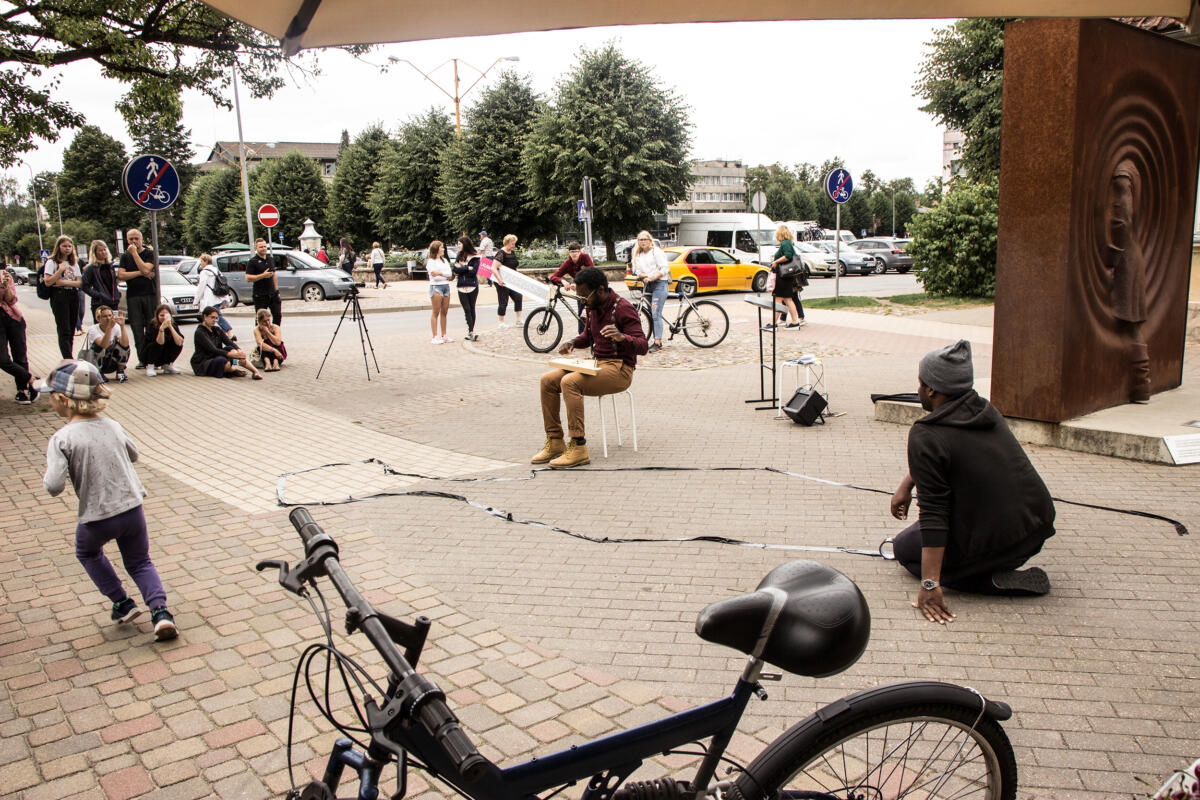
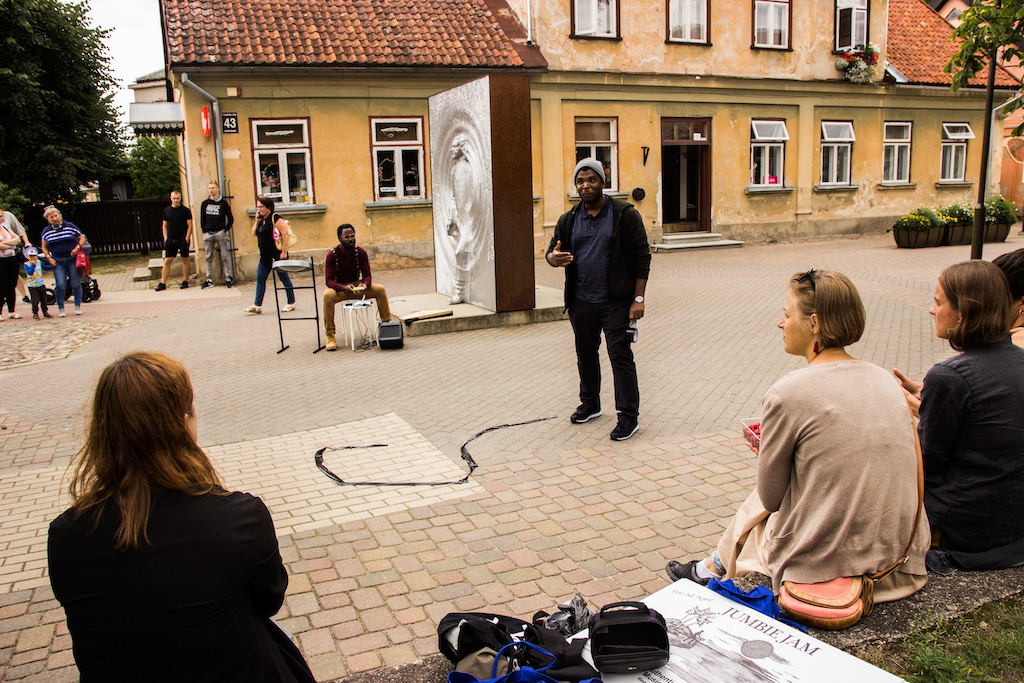
Another important component to the work “We offered Maurice dates, grasshoppers and water” is a tapestry woven by artisans in Taznakht, that was added to the installation at the Stedelijk later. Realized by Ouaouirst’s family in Taznakht, they were asked to interpret the story and envision it in weaving, including on it local symbols and as well as a map of Tobago. Ouaouirst completed the tapestry by scrubbing the messages from her aunt ait Lehs’ song on its surface with henna. Through narration and the recollection of memories, experiences and activities – both imagined and documented – the Stedelijk installation actively engages with filling such intentional historical gaps in knowledge about Saint Maurice. In the Presence of Absence includes newly commissioned work that actively engages with such knowledge gaps in public debates to challenge the ways that histories are written and how certain dominant ideas become fixed.
By combining different artistic tools and instruments, mobilizing different languages, and activating a transnational community to engage with these histories, both works ask about the possibility of a reparative remembering. They raise many new aspects about transnational colonial legacies in Latvia, The Netherlands, Switzerland, Morocco and Tobago. Inspired by the idea of “social distancing” during the COVID-19 pandemic,Jennifer Tosch, the founder of popular Black Heritage Tours in Amsterdam and New York, proposed the notion of “historical distancing” to consider how colonialism and its continuous presence is being neglected. In the Baltic art scene, which is obsessed with present time, it is still fairly rare for artists to engage critically with processes of writing history, and art that can support processes of nation-building has figured stronger in the agendas of art institutions and in the curricula of art academies. In thinking about these two art works, it has been fascinating to realize how art and story-telling can bridge both time and geographies. These two works vividly bring past events and real characters into present time. In telling the stories of Saint Maurice and Duke Jacob Kettler, Quinsy and Jörgen Gario and Mina Ouaouirst integrate crucial and neglected perspectives, to which we lack access due to the ideological nature of sources available. Their work reminds us of the necessity of dealing with these distanced histories on a global scale, and approaches them with an open and critical gaze. A large amount of work to understand the local dimensions of these colonial histories and their complex contemporary legacies remains ahead, as well as finding a place for the new perspectives these two works open up for Baltic history.
Imprint
| Artist | Quinsy Gario and Jörgen Gario |
| Place / venue | International Summer School of the Latvian Centre for Contemporary Art, Kuldīga, Latvia |
| Index | Jörgen Gario Latvian Centre for Contemporary Art Margaret Tali Quinsy Gario |

